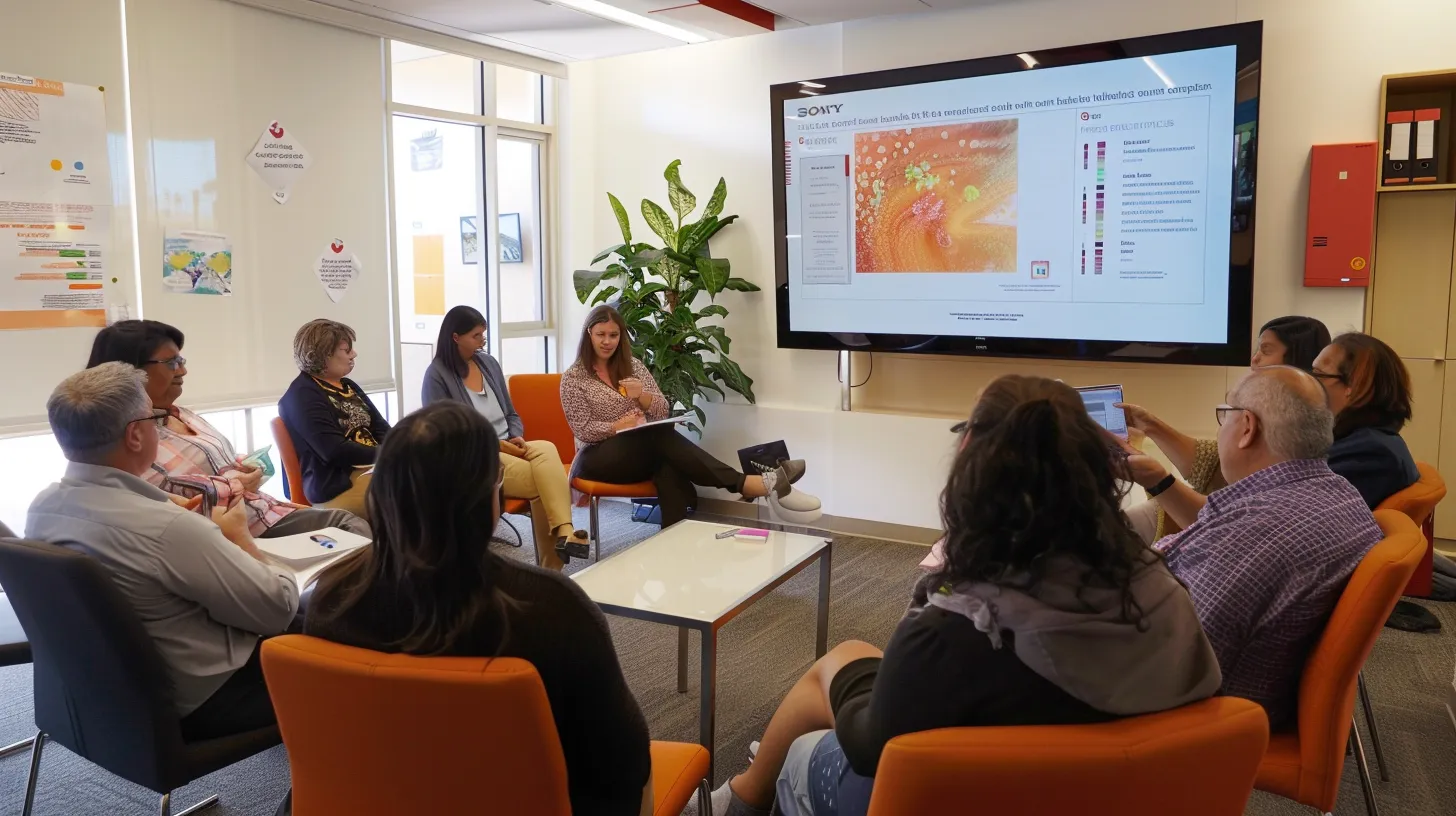by Clear Path Intervention
Share
by Clear Path Intervention
Share

The Interplay of Addiction and Mental Health: Insights Into Dual Diagnosis and Recovery
Does a loved one struggle with both addiction and mental health issues? This blog post explains dual diagnosis by outlining its key elements, how substance abuse intertwines with mental health challenges, and effective recovery strategies. The content walks readers through understanding dual diagnosis, benefits of tailored treatment approaches, and the role of close support systems. By reading this post, families gain useful insights to build a unified support team, making it easier for their loved one to accept help and start on a lasting recovery plan.
When a loved one grapples with both addiction and mental health issues, it can be a profoundly challenging experience for families. This scenario, commonly referred to as dual diagnosis or co-occurring disorders, highlights the complex interplay between substance abuse and mental health conditions such as depression, anxiety, or bipolar disorder. Individuals in this situation often self-medicate with drugs or alcohol to cope with their emotional pain, which can exacerbate their mental health symptoms and create a cycle that is difficult to break. Understanding the nuances of dual diagnosis is crucial for families who want to provide informed and effective support for their loved ones.
Tailored treatment approaches are essential in addressing the unique needs of those with dual diagnoses. Traditional treatment methods may not be effective when both addiction and mental health issues are present; therefore, integrated treatment plans that simultaneously target both concerns are necessary. These plans often involve a combination of therapy, medication management, and support groups, fostering an environment where individuals can begin to make meaningful progress. Moreover, the role of a close support system cannot be overstated; families who educate themselves about dual diagnosis and actively engage in their loved one’s recovery journey can create a nurturing atmosphere. This unity not only helps reduce stigma but can also encourage the individual to accept help and commit to a comprehensive recovery plan, ultimately paving the way for lasting healing and resilience.
Key Takeaways
- dual diagnosis requires integrated treatment for addiction and mental health issues
- unified family support strengthens the recovery process
- regular monitoring helps adapt intervention plans effectively
- personalized care and community resources improve long-term outcomes
Understanding Dual Diagnosis and Its Significance in Treatment

Dual diagnosis involves simultaneous treatment for addiction and mental health disorders. Peer support, research, and education inform therapy for families and parents. Many individuals experience co-occurring conditions, highlighting the need for integrated treatment. This section outlines definitions, prevalence data, the impact of addiction, common disorders, and effective recovery approaches.
Defining Dual Diagnosis and Its Components
The concept of dual diagnosis refers to the presence of addiction along with a mental health condition in a patient, creating a need for combined treatment strategies that address both aspects simultaneously. Understanding its components assists caregivers to design plans that help patients manage symptoms, including anger and anxiety, while progressing in their recovery journeys.
This model targets not only the immediate challenges of addiction but also emphasizes the persistent effects that mental health issues have on the patient’s daily function. Tailored treatment plans may feature lifestyle adjustments like regular exercise to help manage stress and anger, supporting the overall well-being of the patient.
Experts in the field of integrated treatment stress that addressing both the addiction and mental health condition concurrently yields better recovery outcomes. By focusing on implementing practical strategies, such as exercise routines and proactive anger management, a patient benefits from a structured intervention that reduces relapse risks and fosters sustainable recovery.
The Prevalence of Dual Diagnosis Among Individuals
Studies show that the prevalence of dual diagnosis is increasing among individuals dealing with substance abuse and mental health challenges. Research indicates that many patients experience disorders related to both alcohol consumption and substance abuse, which some experts classify as a complex disease requiring integrated approaches.
Clinicians report that community support resources such as narcotics anonymous play a critical role in early detection and support. Families and caregivers often seek guidance to help affected individuals move towards sustained abstinence and improved health outcomes.
Data from treatment centers reveal varied statistics with many patients presenting co-occurring conditions; the following table represents key findings and service insights:
How Addiction Influences Mental Health Conditions
Addiction can significantly worsen mental health conditions, often increasing the risk of relapse in vulnerable individuals, a concern seen in both America and Australia.
Substance abuse worsens symptoms of mental conditions, creating barriers to restore stability and sobriety:
Integrated treatment strategies are fundamental in addressing the dual challenges and helping patients restore a balanced life while maintaining sobriety.
Common Co-Occurring Disorders With Addiction
Common co-occurring disorders with addiction often include depression, anxiety, and post-traumatic stress disorder. This integration highlights the need for professional intervention services to develop treatment plans that effectively address both the drug dependency and related mental health challenges, ensuring that patients receive coordinated care, especially in specialized regions like Boston.
Clinicians emphasize the importance of early detection and integrated treatment to help patients manage symptoms of both addiction and mental health issues. Insurance providers and healthcare experts collaborate to secure access to services, ensuring that individuals gain the knowledge required to seek help and start on a recovery path that fits their unique needs.
Experts recognize that addressing dual diagnosis entails a deep understanding of how mental disorders can amplify the effects of substance abuse. By guiding patients toward professional intervention services, caregivers and clinicians in Boston leverage their expertise to offer comprehensive care, reduce relapse risks, and support prolonged recovery for those battling co-occurring conditions.
Importance of Integrated Treatment Approaches
Integrated treatment approaches play a critical role in addressing both addiction and mental health issues. A well-structured program equips individuals to manage addictive behavior while promoting steady progress in recovery. Professionals in social work often collaborate with community resources to build tailored interventions that meet patients’ diverse needs.
Experts stress that treating concurrent conditions concurrently yields better long-term benefits for individuals facing these challenges. A cohesive program not only mitigates addictive behavior but also fosters resilience through practical recovery strategies. The integration of community services and social work perspectives ensures that interventions remain accessible and effective.
Practitioners advocate for integrated treatment because it offers a comprehensive path to recovery that addresses both physical and emotional health. In addition, specialized programs minimize the recurrence of addictive behavior by creating a nurturing environment supported by community engagement. The expert guidance from social work professionals further cements the value of an approach that treats all facets of dual diagnosis concurrently.
The discussion on dual diagnosis sets the stage for another crucial link. The next section shows the clear connection between substance abuse and mental health.
The Relationship Between Substance Abuse and Mental Health

Substance use disorders affect psychological well-being and shape behavior in addiction, with mental health factors playing a key role in substance abuse thrive. The section highlights symptoms of co-occurring disorders, drawing on data from samhsa.gov, and reviews real-life impacts of dual diagnosis to offer practical insights for recovery.
How Substance Use Disorders Affect Psychological Well-Being
Substance use disorders can create significant challenges for psychological well-being by reducing an individual’s ability to cope with daily stress and emotions. Experts note that the overwhelming effects of addiction can lead to increased anxiety and depressive symptoms, creating a cycle that makes recovery more complex. Clear path interventions encourage families to support their loved one’s treatment, fostering both well-being and recovery.
Research indicates that individuals struggling with addiction often face disruptions in their mental health due to the nature of substance abuse. Mental health struggles may worsen when substance use disrupts sleep patterns, affects mood stability, or interferes with professional and personal relationships. Integrated care strategies play a role in restoring balance, ensuring that both mental health and addiction are addressed thoughtfully.
The impact on psychological well-being is evident in the gradual erosion of self-esteem and a reduced capacity for effective communication. Professionals observe that the stress associated with substance use disorders often hampers the ability to manage emotions, resulting in isolation and diminished resilience. Clear path interventions support a unified approach, allowing loved ones and caregivers to work together, ensuring a long-term recovery strategy that includes mental health care.
The Role of Mental Health in Substance Abuse Thrive
Clear Path Interventions emphasizes that mental health issues can significantly impact the trajectory of substance abuse, often intensifying addictive behaviors. Professionals observe how unmanaged stress and anxiety contribute to patterns that reinforce substance use, urging families to support integrated recovery efforts.
Experts in intervention services note that the interplay between mental health and substance misuse creates a cycle that demands targeted support and coordinated care. This connection is illustrated in the following table that outlines key observations and response strategies in addressing dual diagnosis challenges and recovery progress:
Intervention specialists maintain that effective treatment must simultaneously address both mental and substance use issues. They advocate for comprehensive care plans that educate families, reduce relapse risks, and empower patients to regain balance in daily life.
Symptoms of Co-Occurring Disorders to Recognize
In dual diagnosis cases, markers such as changes in sleep habits, sudden mood fluctuations, and difficulty concentrating can signal co-occurring disorders. Clinical experts consider these signs crucial when assessing the overall impact of addiction on mental health. Monitoring these symptoms equips professionals to design targeted intervention plans.
Signs such as persistent irritability, noticeable withdrawal from social contacts, and high levels of anxiety often indicate the presence of co-occurring conditions:
Observing these indicators promptly benefits the family and professional teams by reducing the risk of further complications. Experts in integrated treatment emphasize that early recognition and coordinated care can improve the recovery process, thus fostering an environment of hope and steady progress.
Real-Life Impacts of Dual Diagnosis
Dual diagnosis creates significant challenges in everyday life, often disrupting work routines and personal relationships. Families and caregivers witness firsthand the impact of untreated mental health issues combined with substance abuse, which hinders effective communication and daily functioning. Professional support services demonstrate that an integrated approach fosters improved recovery outcomes and more stable routines.
The struggles associated with dual diagnosis not only affect the patient but also the entire support network, making household dynamics more difficult. Mental health symptoms, such as mood instability and anxiety, often intensify when coupled with addiction, making recovery a more prolonged process. Intervention services provide practical strategies that help families navigate these challenges with steady progress.
Practical examples show that structured intervention plans can lead to noticeable improvements in a patient’s behavior and overall quality of life. Observations from clinical professionals indicate that successful treatment integrates both behavioral therapies and support systems, leading to fewer relapses. The ongoing effort to address dual diagnosis emphasizes the importance of family involvement and continuous professional guidance in achieving real change.
They share a harsh bond that leaves few unscathed. Simple, tested techniques await to guide those stuck in both struggles.
Effective Strategies for Addressing Dual Diagnosis

The section outlines key aspects of dual diagnosis treatment, including the need for a comprehensive evaluation, evidence-based therapies for co-occurring disorders, robust support networks, and lifestyle modifications to improve outcomes. Each topic offers practical insights that demonstrate clear steps toward sustainable recovery while addressing addiction and mental health challenges together.
Importance of Comprehensive Evaluation in Treatment
Comprehensive evaluation in treatment establishes a clear foundation for addressing dual diagnosis by identifying the full scope of addiction and mental health challenges. This process assists clinicians in designing tailored intervention plans that integrate both aspects of care to promote effective recovery outcomes.
Professional teams rely on detailed evaluations to map out a patient’s history, current behaviors, and underlying issues, resulting in a clear direction for treatment strategies when determining dual diagnosis approaches. The evaluation process is summarized in the table below:
Clinicians use comprehensive evaluations to pinpoint specific needs and create actionable steps towards recovery. This approach empowers families and patients by providing a clear path toward intervention and sustained progress.
Evidence-Based Therapies for Co-Occurring Disorders
Evidence-based therapies provide structured methods to address both addiction and mental health needs through proven treatment techniques. These approaches combine cognitive behavioral interventions and medication management to assist patients with dual diagnosis in achieving steadier recovery outcomes.
Integrated care models focus on tangible strategies that have demonstrated success in clinical settings:
Clinicians use these therapies to build targeted recovery plans that address the intertwined challenges of substance abuse and mental health issues. The application of evidence-based strategies ensures that family members and professionals have a clear framework for managing symptoms and guiding patients toward long-term recovery.
Support Networks and Their Role in Recovery
Support networks serve as a critical element for those encountering dual diagnosis, helping families work in unison to support their loved ones. Clear Path Interventions emphasizes the practical benefit of building a resilient team that reinforces the recovery process through shared understanding and clear communication.
Caregivers and professionals observe that a strong support network provides consistent encouragement, which helps reduce relapse risks and improves treatment adherence. By engaging in regular discussions and coordinated actions, families create a stable environment that promotes sustainable progress in recovery.
Family members and intervention specialists report that supportive groups facilitate access to valuable resources and reinforce a message of collective care. The focused efforts of these networks ensure that both addiction and mental health challenges receive balanced attention, leading to more tailored intervention strategies.
Incorporating Lifestyle Changes for Better Outcomes
Clear Path Interventions recommends structured lifestyle adjustments that involve everyday routines, proper nutrition, and regular physical activity to support recovery outcomes in dual diagnosis cases. These adjustments can help stabilize mood and reduce stress, which benefits both addiction and mental health challenges. The approach underscores the importance of consistency in daily routines to foster measurable progress.
Implementing simple lifestyle changes, such as setting a sleep schedule and incorporating mild exercise, assists in managing symptoms linked to both substance use and mental health disorders. Professionals observe that patients who adapt these changes experience better overall results, as steady progress builds a foundation for long-term recovery. The method empowers patients to take manageable steps toward a balanced life.
Specialized guidance from intervention teams focuses on integrating lifestyle modifications with traditional treatment strategies to address intertwined issues effectively. Practitioners note that subtle changes in eating habits or physical activity can lead to noticeable improvements in patient well-being. The comprehensive approach strengthens the recovery plan by ensuring that lifestyle adjustments complement existing therapeutic efforts.
Strong steps for treatment pave the way to a fresh look at recovery. The journey ahead takes you through each clear, honest move in facing dual diagnosis head-on.
Navigating the Recovery Process With Dual Diagnosis

Clear Path Interventions outlines steps to follow after a dual diagnosis, including setting realistic recovery goals and continuously monitoring treatment plans, while emphasizing relapse prevention strategies for co-occurring disorders. These focused measures provide practical guidance and support for families and professionals working toward a balanced and sustainable recovery path.
Steps to Take After a Dual Diagnosis Is Made
The initial step after a dual diagnosis is established is to arrange a thorough evaluation by a professional team. This process helps in identifying the specific needs of the patient and lays the groundwork for a targeted intervention plan:
The next step involves creating a unified approach by engaging both professional support and family involvement. Experts note that coordinated care between clinicians and family members leads to a more consistent recovery journey, addressing both addiction and mental health challenges.
Lastly, it is vital to monitor progress through regular check-ins and adjustments to the treatment plan. Professionals emphasize that clear communication and commitment to change drive a structured recovery, ensuring all interventions remain effective and relevant.
Setting Realistic Goals for Recovery
Clear Path Interventions stresses the importance of establishing attainable recovery goals that are both specific and measurable. These objectives allow families and professionals to monitor progress and adjust intervention plans as needed.
Professionals recommend a structured process for setting benchmarks that reflect real progress in both addiction management and mental health improvement:
Experts utilize comprehensive evaluations to tailor realistic goals that address individual challenges in addiction and mental health. This approach ensures a clear focus on improvement and fosters confidence among family members and caregivers engaged in the recovery process.
Continuous Monitoring and Adjustment of Treatment Plans
Professionals emphasize that continuous monitoring is essential for treatment plans addressing dual diagnosis, as it helps track the effectiveness of integrated care strategies. Regular assessments allow clinicians to update recovery plans based on real-time progress and emerging needs.
Clinicians review patient responses at scheduled intervals, ensuring that both addiction and mental health factors receive balanced attention:
- Frequent evaluations of behavioral changes
- Adjustments in therapy based on symptom reports
- Active involvement of family members in discussions
These adjustments help maintain steady progress while addressing immediate challenges.
Treatment specialists collaborate with family support teams to adjust intervention methods, ensuring the recovery process remains aligned with patients’ evolving needs. This ongoing process offers a practical framework that builds confidence and encourages lasting change in managing dual diagnosis conditions.
Relapse Prevention Strategies for Co-Occurring Disorders
Relapse prevention strategies for co-occurring disorders focus on creating a stable support system that guides individuals through the complexities of recovery while managing both addiction and mental health challenges. Professionals emphasize coordinated care and clear communication among treatment teams and family members.
Experts suggest practical steps to sustain progress and avoid setbacks, including regular check-ins and structured daily routines that cater to both physical and mental health needs:
- Establish consistent evaluation schedules
- Maintain regular therapy sessions
- Involve family members in support meetings
Dedicated intervention specialists advise that personalized relapse prevention plans boost resilience, prioritize safety, and address immediate risks when changes in behavior are observed. Professionals remain committed to updating these plans as new challenges or improvements arise during recovery.
The journey moves from challenging recovery steps to the power of community strength. A dedicated circle of support lights the way to lasting change.
The Role of Support Systems in Dual Diagnosis Recovery

Support systems play a key role in recovery from dual diagnosis, offering a network that empowers families and loved ones. This section outlines strategies for building strong support networks, accessing educational resources, engaging in community programs, and fostering empathy. These practical approaches provide clear guidance for addressing both addiction and mental health challenges.
Building a Strong Network of Support
Clear Path Interventions advises that a unified network of support strengthens the overall recovery process. Professional teams encourage families to unite and maintain regular communication, ensuring that loved ones receive consistent guidance and encouragement. This network creates a reliable structure where everyone contributes to the recovery efforts.
Experts observe that a strong support system fosters trust and stability, which are crucial for addressing both addiction and mental health challenges. Families work together to share responsibilities and monitor progress, allowing early identification of any potential setbacks. This collaborative effort enables practical action and ongoing evaluation of the recovery plan.
Intervention specialists emphasize the value of structured support systems in sustaining long-term recovery outcomes. Professionals advise that clear roles within the family improve coordination and help maintain focus on the unified recovery message. This coordinated approach ensures that all involved have access to practical insights and continuous professional guidance.
Educational Resources for Families and Loved Ones
Clear Path Interventions provides educational tools that equip families with actionable tactics, straightforward reading materials, and online modules designed specifically for dual diagnosis recovery. These resources demystify recovery steps and assist families in understanding treatment challenges and proactive support measures. Practical guides and expert-reviewed materials help caregivers stay informed and confident in making decisions that promote long-term stability.
Specialized educational programs offer clear direction for family members seeking ways to support their loved ones during recovery. Trusted content from intervention professionals outlines proven strategies, clarifies common concerns, and supplies updates on the latest treatment techniques for co-occurring disorders. These resources serve as a reliable baseline for developing a unified approach to recovery that all family members can adopt.
Access to targeted educational resources enables families to quickly identify key recovery triggers and understand effective support methods. Expert-crafted materials provide a clear framework that highlights both practical and clinical insights, reinforcing a consistent intervention approach. Such educational efforts empower caregivers to make informed decisions and actively participate in the recovery process, ensuring that each step is guided by professional expertise.
Participation in Support Groups and Community Programs
Participation in support groups and community programs builds a solid foundation for dual diagnosis recovery by connecting families and professionals with valuable insights and shared experiences.
Clear Path Interventions notes that regular involvement in these groups provides a forum for discussing recovery challenges and achievements, allowing participants to access practical support and expert guidance through community programs:
Active participation in these programs enables families to adopt clear recovery strategies and address dual challenges effectively, ensuring that both addiction and mental health concerns receive balanced attention.
Encouraging Empathy and Understanding in Support Circles
Clear Path Interventions emphasizes that empathy and understanding within support circles play a crucial role in addressing dual diagnosis challenges. Families and professionals benefit from open, honest communication that builds trust and encourages compassionate interactions among all members. This approach helps create a consistent environment where support systems guide individuals toward balanced recovery in addiction and mental health treatment.
Experts note that fostering empathy in support circles provides a clear framework for constructive responses to behavioral changes. By promoting active listening and coordinated intervention efforts, support teams are better equipped to manage the complexities of addiction and co-occurring mental health issues. This method leads to more effective recovery planning and sustained progress for individuals struggling with dual diagnosis.
Intervention specialists affirm that encouraging understanding among family members and care providers strengthens the overall support network. Structured interactions and educational sessions help clarify the challenges associated with dual diagnosis, empowering those involved to address both addiction and mental health issues directly. The commitment to a unified, empathic approach contributes to a long-term recovery strategy that benefits the entire support system.
Support systems build a sturdy bridge for those facing dual challenges. Real stories now shine light on the hard-won lessons that guide recovery.
Success Stories and Lessons Learned in Dual Diagnosis Recovery

Inspiring testimonials from individuals who overcame challenges provide insight into effective dual diagnosis recovery. Key takeaways from case studies in integrated care and individualized treatment details emphasize long-term recovery benefits. Practical strategies for maintaining mental health post-recovery are explored, offering clear guidance for families and professionals to support ongoing progress in addiction and mental health treatment.
Inspiring Testimonials From Individuals Who Overcame Challenges
Individuals share their experiences of overcoming dual challenges through integrated treatment approaches and support networks. Their testimonials highlight the significant improvements in mental health and addiction management as a result of targeted intervention strategies. These real-life examples offer practical insights and inspire families to pursue comprehensive recovery planning.
Many success stories credit the coordinated efforts of family members and professional intervention teams for their progress. One account emphasizes the role of a unified support system in managing emotional and behavioral challenges, allowing for steady recovery:
Other individuals have found that ongoing communication with intervention professionals and participation in community support groups significantly advanced their recovery. Their stories emphasize clear, actionable steps that facilitated meaningful change and equipped them with the skills to face daily challenges. These testimonials serve as a valuable resource, offering guidance and hope for those navigating dual diagnosis recovery.
Key Takeaways From Case Studies in Integrated Care
Case studies reveal that integrated treatment plans, developed by professional teams, lead to noticeable improvements in both addiction recovery and mental health stability. These detailed evaluations provide clear guidance for intervention strategies that involve families and support networks working together. The actionable insights drawn from these cases guide care teams in creating unified plans for long-term recovery.
Data from real-life examples demonstrates how tailored interventions reduce relapse risks and improve daily functioning. Experts observe that coordinated care between professionals and family members strengthens treatment outcomes, encouraging sustained progress. The key findings underline the importance of creating a cohesive support system to address dual diagnosis challenges effectively.
Practical examples from integrated care case studies show that early intervention and continuous monitoring enable adjustments that improve overall recovery success. These studies highlight the value of personalized care plans that consider both addiction and mental health needs. The professional approach presented in these cases offers families clear steps and hope for a balanced, enduring recovery journey.
The Impact of Individualized Treatment on Long-Term Recovery
Individualized treatment plans have a lasting effect on long-term recovery by addressing both addiction and mental health challenges with targeted interventions. Professionals report that customized strategies allow each patient to receive the precise support needed for sustained improvement. This approach has proven effective in reducing relapse and increasing overall stability.
Experts observe that personalized treatment methods offer measurable benefits in dual diagnosis recovery, resulting in better adherence to recovery goals. Tailored programs help patients develop coping skills that manage their symptoms while building stronger support networks. Clear Path Interventions uses these strategies to create a consistent, manageable plan that benefits both the individual and their family.
Clinical evaluations highlight that individualized care leads to more effective outcomes and long-term progress in recovery. Intervention specialists note that patients engaged in customized treatment are more likely to maintain abstinence and rebuild their daily routines. This focused approach provides families with actionable insights that support a healthier, stable future.
Strategies for Maintaining Mental Health Post-Recovery
Professionals advise that structured follow-up sessions and consistent therapy form a cornerstone of maintaining mental health after recovery. Clear Path Interventions recommends that individuals continue periodic evaluations and engage in supportive counseling to ensure stability and progress.
Expert practitioners emphasize self-care strategies that include balanced nutrition, regular physical activity, and adequate rest to sustain mental well-being post-recovery. These approaches assist individuals in managing residual stress and reinforce the benefits of integrated treatment plans.
Practitioners stress the importance of clear communication within support networks and ongoing collaboration with treatment specialists. Consistent engagement with community programs and family meetings has proven effective in identifying emerging challenges and guiding individuals toward a balanced life.
Conclusion
The content highlights how simultaneous treatment for addiction and mental health challenges offers a clear path toward sustainable recovery. It shows that coordinated care involving family support and professional guidance yields improved outcomes and reduced relapse risks. The insights underscore the need for comprehensive evaluation, targeted therapy, and lifestyle adjustments to manage dual diagnosis effectively. Readers gain a deep understanding that unified intervention strategies support both the patient and their support network on the journey to wellness.
6 Common Questions Asked Before Scheduling an Intervention
When facing the reality of a loved one’s addiction, planning an intervention can feel overwhelming. At Clear Path Intervention, we understand the many questions families have when they’re preparing for this important step. Here, we’ve answered six of the most common questions people ask before scheduling an intervention.
1. What exactly is an intervention?
An intervention is a structured, compassionate conversation designed to help someone recognize the impact of their addiction and accept help. Led by a trained interventionist, it provides a safe environment where family and friends can express concern, share personal experiences, and offer a path toward treatment. The goal is not to shame or criticize, but to lovingly guide the individual toward recovery.
2. When is the right time to stage an intervention?
If you’re asking this question, chances are the right time is now. Addiction is a progressive disease, and waiting often leads to further harm. If your loved one’s substance use is affecting their health, relationships, work, or safety, an intervention may be the critical first step toward change.
3. Who should be involved in the intervention?
Typically, close family members, friends, and sometimes colleagues who have a meaningful relationship with the individual are involved. It’s important to select participants who are willing to speak from a place of love and concern rather than anger or judgment. Before the intervention, the interventionist will help you decide who should participate and how to best prepare.
4. What happens if the person refuses help?
Refusal is a possibility, but preparation makes all the difference. At Clear Path Intervention, we coach families on how to set clear boundaries and consequences if their loved one declines treatment. Often, when an intervention is done with care and professionalism, individuals are more likely to accept help than resist it.
5. How much does an intervention cost?
Intervention services are an investment in your loved one’s future. While costs vary depending on factors such as the interventionist’s experience, travel requirements, and level of support needed, you can typically expect to pay between $2,500 to $10,000 for a professional intervention. It’s important to note that interventions are not covered by insurance. At Clear Path, we are transparent about our fees and work closely with families to find the right plan for their situation.
6. How do we prepare for an intervention?
Preparation is key to a successful intervention. This typically involves pre-intervention meetings with the interventionist, crafting personal statements, and deciding on treatment options ahead of time. Having a clear plan not only strengthens the message delivered during the intervention but also minimizes confusion and emotional escalation during this critical conversation.
If you’re considering an intervention for a loved one, Clear Path Intervention is here to guide you every step of the way.
Contact us today to learn more about our approach and how we can support your family through this important process.
HELP IS AVAILABLE
Do You Have a Loved One Struggling with Addiction or Mental Health Issues?
In recent months, first responders across the country have faced a terrifying new challenge: opioid overdoses that don’t respond to naloxone, the lifesaving drug traditionally used to reverse opioid effects. Reports are emerging from cities like Chicago and Philadelphia that a veterinary sedative called medetomidine is increasingly being found mixed with fentanyl and other opioids. […]
Here’s a topic that is very relevant to the holiday season, a time that comes with built-in stress and plenty of exposure to close family members. When a close family member is addicted to drugs or alcohol, their addiction takes a toll on you and your family. It is a slow process of utter devastation […]
During the global COVID-19 pandemic, there has been a significant increase in alcohol use disorder-related deaths among all age groups and sexes. Actual mortality rates related to alcohol have been far higher than “normal statistical levels” for both 2020 and 2021. In 2020, observed death rates tied to alcohol were 25% higher than expected, and […]





